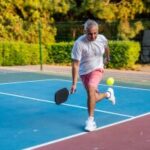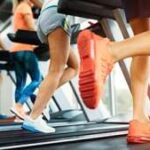A study published in the BMJ Open Sport & Exercise Medicine journal suggests that aquatic high-intensity interval training (AHIIT) could be as effective as land-based HIIT (LBHIIT) in improving exercise capacity in adults with chronic conditions. This finding is significant as AHIIT may offer a safer and more feasible alternative for individuals who cannot perform LBHIIT.
High-intensity interval training (HIIT) is a form of exercise characterized by short bursts of intense activity followed by periods of lower intensity recovery. HIIT is known for its efficiency and health benefits, particularly in enhancing aerobic capacity and endurance.
The benefits of exercising in water, such as reduced joint pressure and the ability to perform movements that might be difficult on land, are well recognized. However, there has been uncertainty about its physiological impacts. To address this, researchers analyzed 18 trials comparing the effects of AHIIT on exercise capacity with LBHIIT, moderate-intensity aquatic exercise (AMICT), and non-exercising control groups.
The trials included a total of 868 participants, 74% of whom were women, with various chronic conditions such as back pain, arthritis, chronic lung disease, type 2 diabetes, and multiple sclerosis. The study used the GRADE system to assess the certainty of evidence.
Results indicated that AHIIT moderately improved exercise capacity compared to no exercise, had a small beneficial effect over AMICT, but showed no significant difference compared to LBHIIT. Fewer adverse events were reported in AHIIT than LBHIIT, and adherence rates to AHIIT ranged from 84% to 100%.
While the study is observational and some trials lacked a blind assessor, which might affect results, the researchers suggest that AHIIT could be a viable alternative to LBHIIT for people with chronic conditions. The support and buoyancy provided by water may facilitate the effectiveness of high-intensity training.
Future research is recommended to explore the relationship between exercise capacity and patient-related outcomes, barriers to HIIT, and continued commitment to exercise independently.










